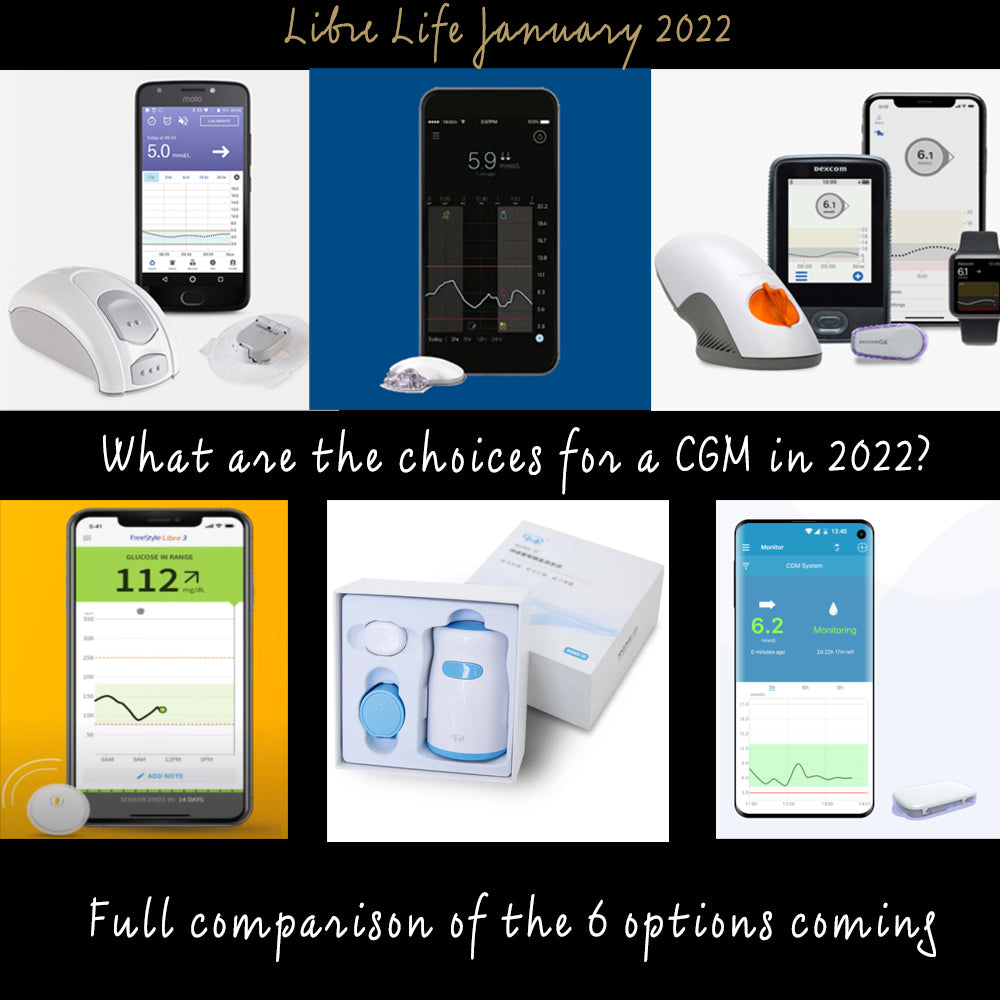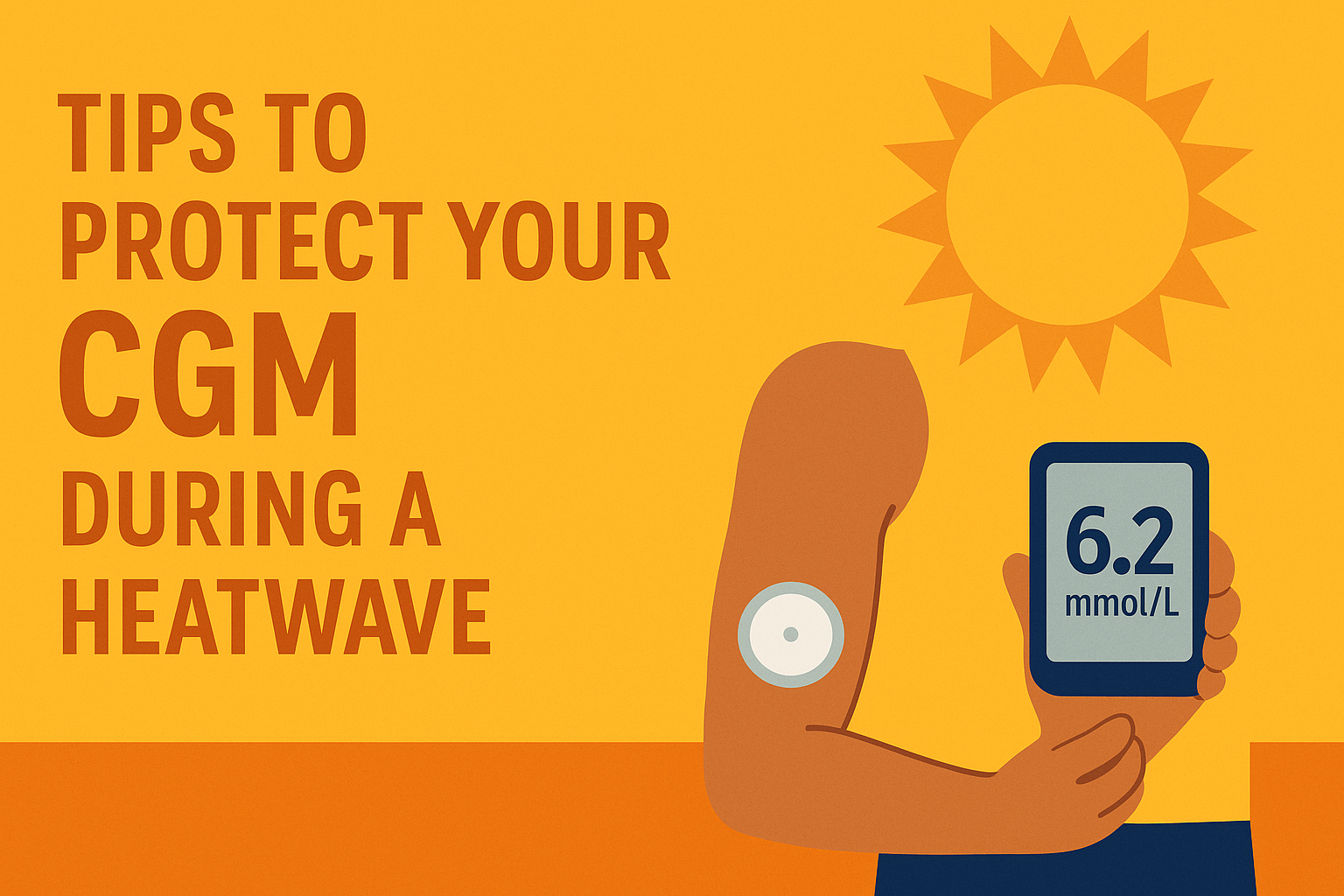
| Blogs and publications on this website are independent of any involvement by medtech companies or diabetes related charities. To ensure there is no bias, we do not accept any products, freebies or other material from any medtech provider. All materials are copyright©️Love My Libre Ltd. |
***
🎉 Real-time CGM is coming for NHS T1Ds!
We look at 6 CGM systems that could be available on the NHS in 2022.
This blog is particularly focussed on sensor wearers in the UK and particularly those who are able to access CGMs through the NHS. But, it should also be useful for those outside of the UK looking to assess which CGM may be suitable for them.

In November 2021, the NICE Guidelines (which determines what medicines and medtech is used by the NHS) was updated in relation to the use of continuous glucose monitors (CGM). These are currently published as a draft for consultation, but from April 2022 they are expected to come into place and are set to bring big changes for T1Ds.
It looks like there will be 6 options to choose from if you're wearing just a CGM as a standalone device ie. not with a pump and the options of which CGMs will be available are listed on the NHS Supply Chain list of products, issued in December 2021.
The six options are: FreeStyle Libre 3, Dexcom G6, GlucoMen Day, Touchcare Nano, Guardian Connect & MeiQi.
 Touchcare Nano
Touchcare Nano  Guardian Connect
Guardian Connect
 GlucoMen Day
GlucoMen Day  Dexcom G6
Dexcom G6
 MeiQi system
MeiQi system  FreeStyle Libre 3
FreeStyle Libre 3
⬇️ Scroll down to see our table comparing all the key features of these CGMs.
A quick word about Libre 3
The big change is that FreeStyle Libre 3 and these options won't be available in the usual way through a GP's prescription, but details of how patients get access has not yet been released. It looks like it has to come through hospital diabetes teams. Abbott have stated that Libre 3 is not to be considered as an upgrade from Libre 2 in the same way as moving from Libre 1 to 2. A statement for the company indicated that Libre 3 was for the management of more "complex diabetes".
This may sound like a barrier to access but in fact is set to shake-up the landscape for type 1's as the person behind the changes - Professor Partha Kar, Diabetes Specialist for the NHS in England - has assured the community on Twitter that real-time CGMs are coming for all T1s and that they'll be a choice of device! On the face of things, this is a complete change in the approach for T1s who will be offered a real-time CGM as a matter of routine. Hurrah!
Read also: More about Libre 3 here.
What do the updated NICE Guidelines say?
It is understood that CGMs will be offered (note, this is an update to the term 'considered' previously used in the Guidance) on par with Libre 1/2 (referred to as 'flash' devices) for T1 adults, and in the case of children and young adults CGM will be the first option, ahead of Libre. There will also be the option for some T2s to get a flash device.
This is reflected in the NICE Guideline (NG17) which state:
An adult with type 1 diabetes should be offered a choice of a real-time cgm or ‘flash’ device based on their individual preferences, needs, characteristics, and the functionality of the devices available.
The NICE Guidelines give the following factors to be considered when choosing a CGM:
- Whether the device provides predictive alerts or alarms and if these need to be shared with anyone else, for example a carer.
- Whether using the device requires access to particular technologies (such as a smartphone and up-to-date phone software).
- How easy the device is to use and take readings from, including for people with limited dexterity.
- Fear, frequency, awareness and severity of hypoglycaemia.
- The person’s insulin regimen or type of insulin pump, if relevant (taking into account whether a particular device integrates with their pump as part of a hybrid closed loop or insulin suspend function).
- Whether, how often and how the device needs to be calibrated.
- Whether data can be extracted and shared with the person’s healthcare provider.
- How unpredictable the person’s blood glucose levels are and whether erratic blood glucose is affecting their quality of life.
- Whether the person has situations when symptoms of hypoglycaemia cannot be communicated or can be confused, for example during exercise.
- Clinical factors that may make devices easier or harder to use.
- Frequency of sensor replacement.
- Sensitivities to the device, for example local skin reactions.
- Cosmetic factors.
Key features comparison
For standalone CGM via NHS. Further options are available for integration with pumps.
Here we compare the options available on the NHS Supply Chain Product Matrix with a contract start date of 7 January 2022 and is intended to apply for 2 years.

Click to open this comparison or open from here: https://indd.adobe.com/view/b1fc3805-d057-4d47-a91b-06c6454ed4e4
We will be looking at the pros and cons of each of these CGMs in a future blog, so please do subscribe to Libre Life if you're not already.
Notes
- NICE Guidelines apply in England only.
- Not all product or options will be available to all T1Ds, in all markets or countries.
- All the above CGM systems measure interstitial fluid.
- MARD is mean absolute relative difference and a lower figure indicates greater accuracy has been ascertained in trials by the manufacturer.
- The list of products available through the NHS Supply Chain is reviewed every 2 years to allow for new products to be included.
- The NHS Supply Chain lists further products for use with pumps including closed loop options.
References
NHS Supply Chain: Insulin Pumps and Associated Products / Insulin Pumps, Continuous Glucose Monitoring (CGM) and Associated Consumables.
NICE Guidelines NG17: Type 1 diabetes in adults: diagnosis and management, Draft for consultation, November 2021
https://www.nice.org.uk/guidance/gid-ng10265/documents/draft-guideline
Disclaimer
Details and data is correct to the best of the author’s knowledge at the time this blog is published. We do not accept responsibility for any errors or omissions. Information is for guidance only and it is recommended that you confirm specific details and suitability yourself with the supplier, or your healthcare provider.
Love My Libre is not associated or affiliated with any of the aforementioned medtech providers. Content here and on our website www.lovemylibre.com does not constitute medical advice or replace the relationship between you and healthcare professionals nor the advice you receive from them.
The author of this blog has type 1 diabetes and uses the FreeStyle Libre 2 which is provided on NHS prescription. We do not have any affiliate relationship with Abbott or FreeStyle Libre.
All third party devices and apps mentioned are registered trademarks of their respective owners.





Leave a comment (all fields required). Please note, we are unable to respond to individual comments posted here.